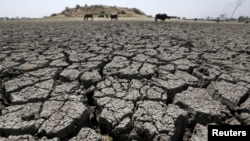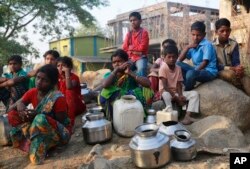A years-long drought in India is starting to take a toll on 330 million of the country’s residents as people suffer from water shortages and poor farmers are helpless to save their dying crops.
During Supreme Court testimony, one of the Indian government’s top lawyers said that a quarter of the country’s population across nearly 256 districts have been affected by the drought after two consecutive years of poor monsoon rains.
Already, the drought has forced the government to release funds to those areas hardest hit, where the lack of rainfall has led to the rationing of drinking water.
Monsoon rains
Most Indians are reliant on the monsoon rains for survival, and as summer hits they are being forced to travel very long distances to find water, as their wells continue to dry up.
Temperatures in parts of eastern, central and southern India have remained high over the past several weeks, and caused more than 160 deaths in the past several weeks. Most of those who died during the heat-wave were laborers and farmers, forced to work outside during days where temperatures exceed 40C.
Hundreds of mainly poor people die at the height of summer annually in India, but temperatures have risen earlier than normal, increasing concerns about this year's overall toll. Last year, more than 2,000 people died from heat related issues.
Schools across the eastern state of Orissa are closed through next week due to the extreme heat wave.
Protests over lack of water
Meanwhile, protests have been held further north over the lack of drinking water.
South of Orissa, in Andhra Pradesh, officials are distributing free water and butter milk, and encouraging people to stay inside during the hottest times of the day.
Earlier this month, a court in the western state of Maharashtra ordered the Indian Premier League to move 13 cricket matches out of the area because there wasn’t enough water to maintain the fields.
The government has also asked local municipalities to stop supplying water to swimming pools.














